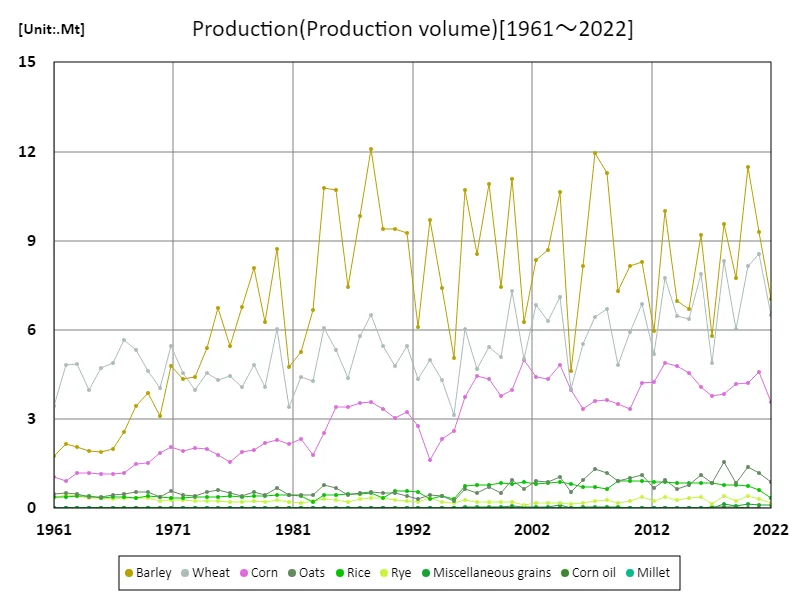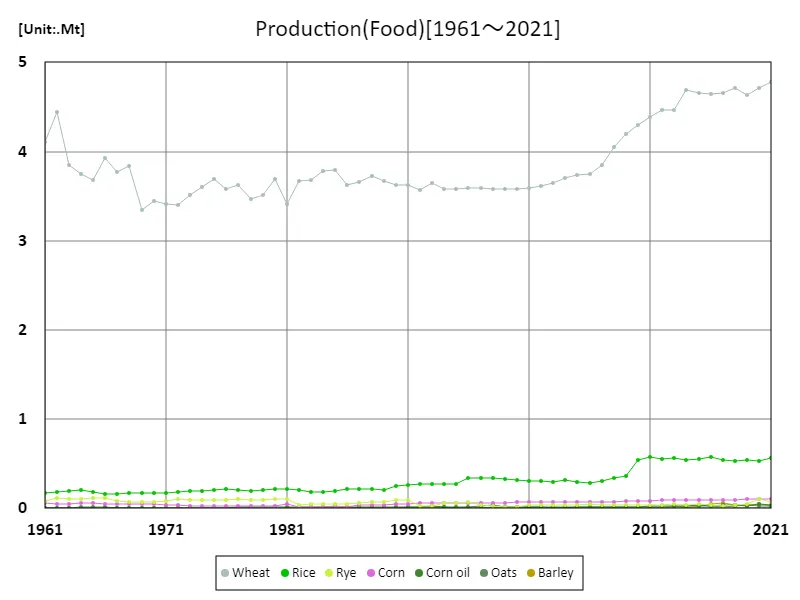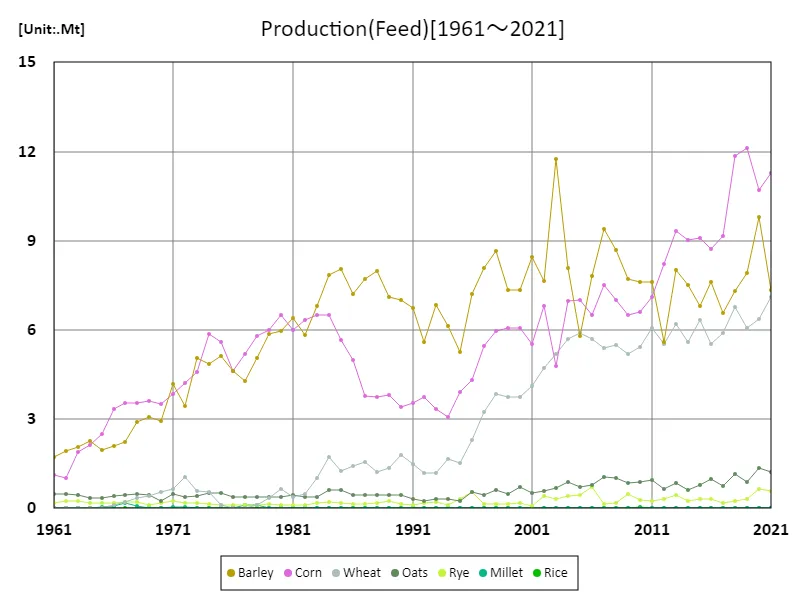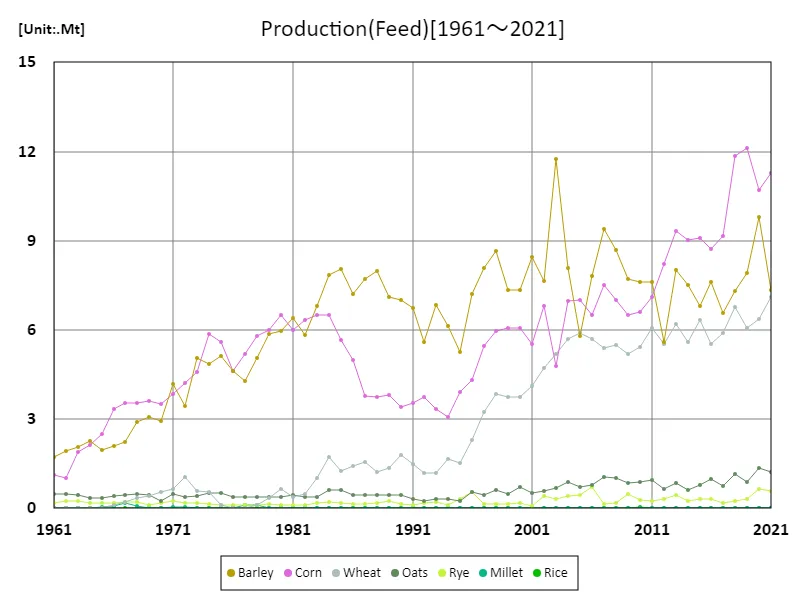Abstract
Spain’s cereal production is diverse, with barley being a particular focus. According to data for 2022, barley production will reach 7.03 Mt (million tonnes), the largest among all grain production in Spain. Barley is closely related to the animal husbandry industry as it is primarily used as animal feed. Spain is also focusing on exports of grain production, not just food supply, and is particularly active in exporting barley and wheat to Europe and other regions. These cereals are not only consumed as food but are also in high demand as animal feed and form an important part of Spanish agriculture. Although production volumes have been unstable in recent years due to climate change and fluctuations in export markets, Spanish agriculture still occupies an important position in Europe.
Production(production (production volume))
Spain’s grain production has fluctuated between 1961 and 2022. Barley in particular peaked at 12.1Mt in 1988 and has been declining since then. Production volume in 2022 will be only 58.2% of the peak, at 7.03 Mt. This decline can be attributed to climate change, agricultural efficiency improvements, reduced cultivated area, and even fluctuations in market demand. Barley is also primarily used for animal feed and is therefore also affected by demand from the animal husbandry industry. In recent years, the shift towards food crop production and price fluctuations have also been major factors. In Spain, cereal production has generally been volatile, and the decline in barley production is part of this. Nevertheless, barley remains an important crop and plays a role, especially in the export market.


The maximum is 12.1Mt[1988] of Barley, and the current value is about 58.2%
Production (food)
Wheat production for food purposes figures prominently in Spanish cereal production. From 1961 to 2021, wheat production increased steadily, peaking at 4.78 Mt in 2021. This year’s production volume was the highest ever, reaching 100% compared to its peak. This increase is driven by improved agricultural techniques, increased acreage and rising domestic and international demand for wheat. Wheat is also primarily consumed for food, with high demand for it as an ingredient in bread and pasta driving production. Furthermore, although it is subject to climate change and market trends, production has been stable in recent years. Spanish wheat production plays an important role in the agricultural sector, not only satisfying domestic consumption but also contributing to exports.


The maximum is the latest one, 4.78Mt of Wheat
Import and export (exports)
Spain’s grain exports have shown notable trends, especially in wheat. In 1961, wheat exports reached a peak of 2.02 Mt, a large proportion of Spain’s total grain exports. Since then, export volumes have fluctuated, with the average export volume remaining at 489kt. A total of 3.2Mt of exports was recorded, highlighting Spain’s important role as a grain producing country in the European market. Wheat in particular has become a major export product, with a large amount of Spanish wheat being shipped to Europe and North Africa. In recent years, export volumes have remained stable compared to other grains, due to improvements in agricultural technology and increased production. Although export volumes fluctuate from year to year, depending on the weather and international market demand, grain exports remain an important economic activity in Spain.


The maximum is 12.1Mt[2019] of Corn, and the current value is about 93.2%
Animal (feed)
In 1961, Spanish grain production saw wheat record the largest export volume, reaching 2.02 million tonnes (Mt). Overall grain exports averaged 489 kilotonnes (kt), with total exports coming in at 3.2 Mt. At the time, Spain was a developing agricultural country, prioritizing domestic demand while exporting any surplus. Much of the export was for food, with the Mediterranean and European markets being the main destinations. On the other hand, dry weather conditions and delays in infrastructure development have had an impact on production and export volumes. Although the scale of exports was modest compared to other major exporting countries, China still had a certain presence, especially in wheat.


The maximum is 12.1Mt[2019] of Corn, and the current value is about 93.2%



Comments